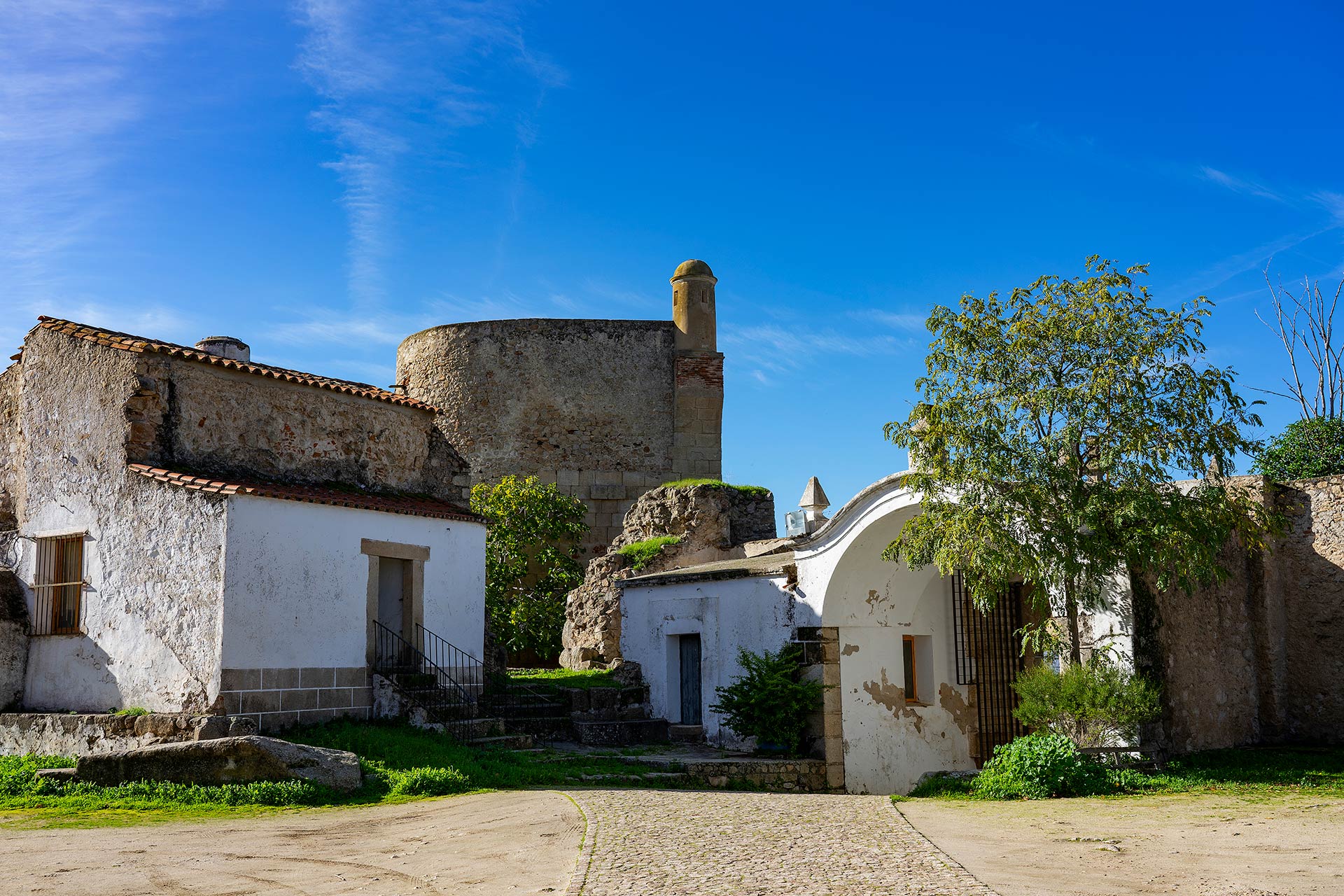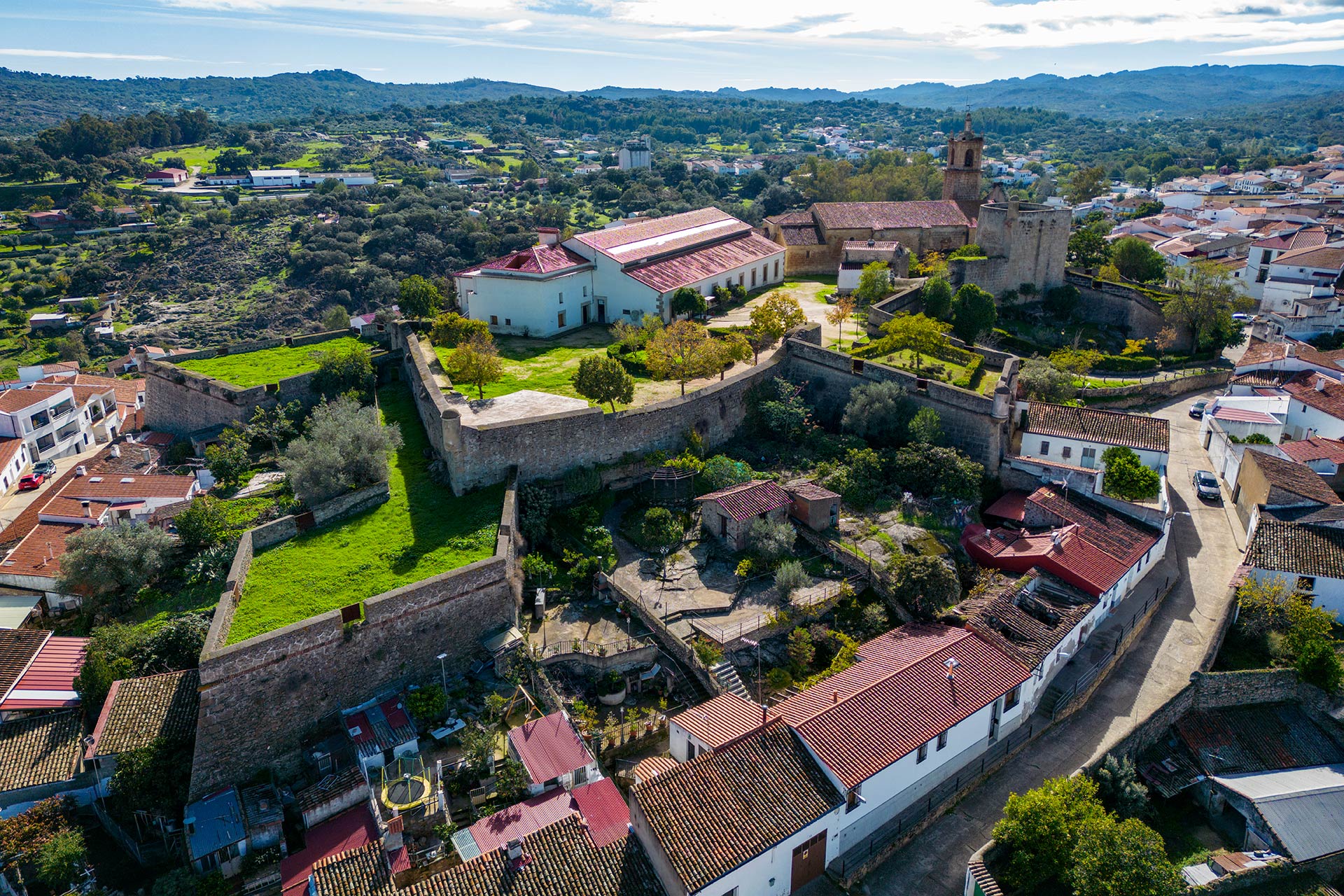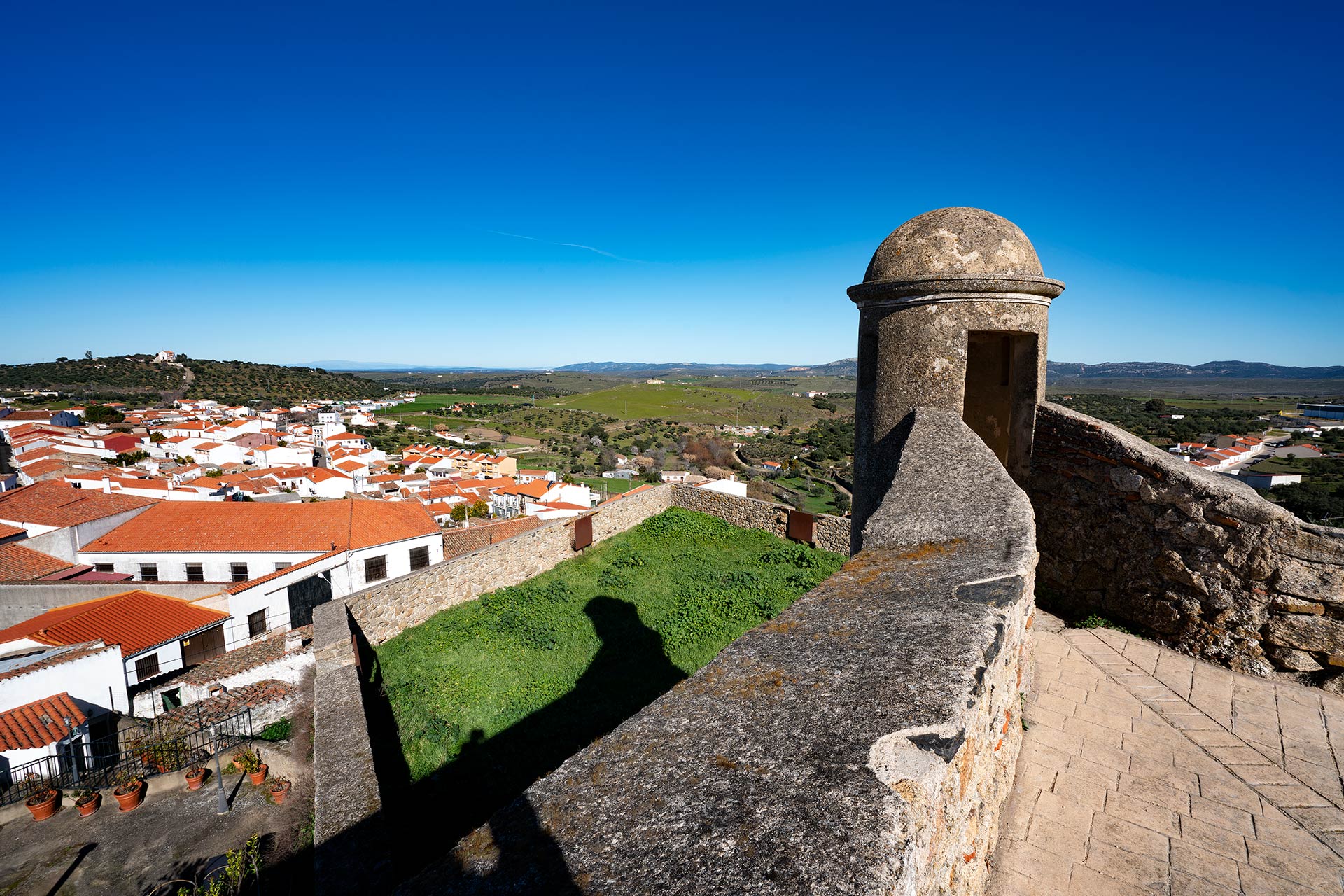Did you know that this castle belonged to the Portuguese for several periods? Surprise yourself with stories about what happened between the troops of our country and those of our neighbour and be amazed by the structures that make up the castle.
Would you like to find out more? If so, then inside the castle itself you can visit the Identity Centre of the First Settlers, where you will learn about the megalithic and prehistoric cultural highlights in the area surrounding Valencia de Alcántara, such as the European Megalithism Centre and the Tagus International Transborder Biosphere Reserve, with interactive experiences.
It is a comprehensive experience that will transport you straight into the past!
The fortress where you are now may originally be of Muslim origin and it was rebuilt when the Order of Alcántara, under the orders of Alfonso IX, took over the building in 1221. It had to be rebuilt several times over the years due to the numerous clashes that took place between the Spanish and the Portuguese armies.
Its current layout dates back to the 16th and 18th centuries, when it went through a restoration process which had both positive and negative effects, as the fortress was made more suitable for its times but the remaining medieval components were lost. At first, the Homenaje Tower was outside of the fortified enclosure, but, as a consequence of modifications over the years, it ended up being inside along with the cistern, Rocamador church and a series of bastions.
If you would like to see even more, inside the castle you will find the Identity Centre of the First Settlers where, thanks to audiovisual and interactive elements, you can continue to learn about the most important highlights of megalithic culture and prehistory in the surroundings of the Tagus International Transborder Biosphere Reserve. The centre has an exhibition area where you will find a map of the area and a contemporary representation of a dolmen with a corridor, which has explanatory panels and replicas of prehistoric objects. You will also be able to watch a short video inside the chamber of this dolmen.
For an even more immersive experience, you can put on virtual reality glasses to discover different areas of the International Tagus that have megalithic monuments and prehistoric sites, with all of the information available in Spanish, English and Portuguese.









